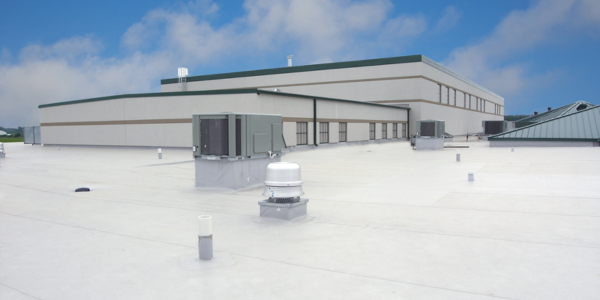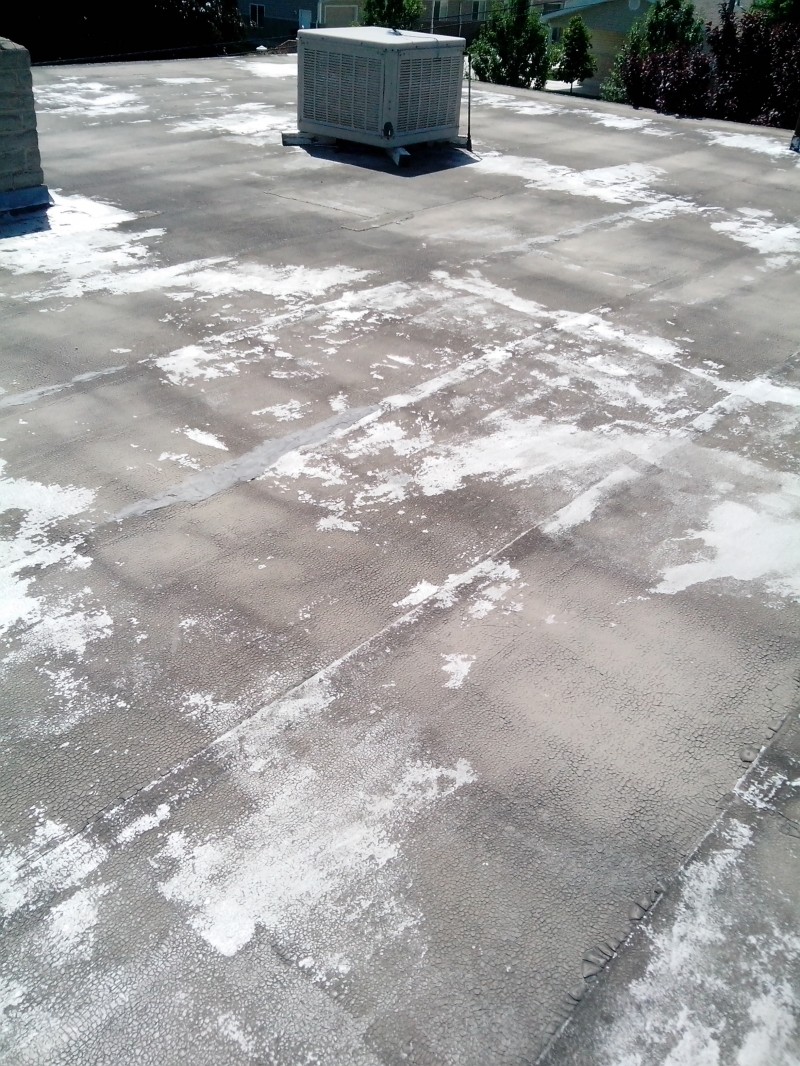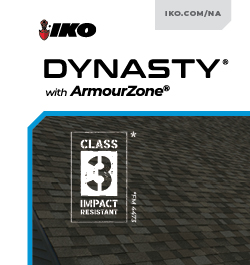Is single-ply roofing right for your building?
October 28, 2025 at 6:00 a.m.By Gene Fowler, Sentry Roofing.
This low-maintenance, energy-efficient roofing system offers strong protection and long-term value for building owners.
When it comes to protecting your business, the right roofing system can make all the difference in energy-efficiency, long-term durability and overall peace of mind. While single-ply roofing has long been a staple in commercial construction, it’s quickly gaining attention among homeowners looking for a cost-effective, low-maintenance alternative to traditional roofing materials, especially in regions with harsh weather or high energy costs.
Here at Sentry Roofing, we want building owners to be aware of all the options available to them so they can make informed decisions about their roofs. Whether you’re planning a roof replacement or building a new structure, exploring the advantages of single-ply roofing can help you make a smart investment in your property.
1 - Energy and UV efficient
 Do you live in a region that sees a constant supply of strong sunlight? What about strong weather fluctuations? Not only are these systems durable and able to hold up against extreme conditions, but they’re also naturally reflective.
Do you live in a region that sees a constant supply of strong sunlight? What about strong weather fluctuations? Not only are these systems durable and able to hold up against extreme conditions, but they’re also naturally reflective.
In fact, Duro-Last, the world leader in PVC installation, has been named the World’s Coolest Roof System for reflectivity as well as emissivity. PVC also contains a similar makeup to sunscreen, which assists in the reflection of UV rays.
Single-ply roofing systems are also more energy-efficient than other models. Due to the nature of their construction, they’re able to reflect more sunlight and absorb less heat than a standard roof.
When you install a roofing system with a high degree of solar reflectivity, you’ll help your whole building become more efficient and eco-friendly. Over time, this can help reduce your building’s overall heating and cooling costs, helping you save money on your utility bill!
2 - Chemical-resistant
These roofs hold up especially well in chemical conditions that could deteriorate other, weaker installations. This makes them ideal for acid rain conditions, as well as roofing environments that see high quantities of grease or oil, such as restaurants.
 3 - Fire-resistant
3 - Fire-resistant
Single-ply membranes offer excellent fire resistance. PVC is self-extinguishing and flame-resistant. This makes it an ideal choice for buildings with strict safety requirements, such as restaurants, schools, hospitals or manufacturing plants. It provides extra protection and peace of mind.
4 - Puncture-resistant
Being single-ply, won’t these membranes puncture more easily from foot traffic or machinery than their multi-ply counterparts? Not in most cases.
While they might not have hard exteriors or redundant layers characteristic of multi-ply membranes, a premium-quality single-ply system will have an excellent base fabric that provides superior puncture resistance. In fact, a roofing system’s durability depends more on this reinforcing fabric than on the thickness of the membrane itself.
Another thing to consider, PVC has another layer within its scrim called weft insertion. This layer prevents the membrane from ripping further if it is punctured. For example, say a tree falls and cuts your PVC membrane.
Another roof type could catch in the wind, and the entire roof system will do what is called a “zipper effect,” pulling the membrane back, ripping it further. Due to the weft insertion, PVC will catch only a few inches from its tear, not allowing for any more rippage. This will allow for a very simple, easy, inexpensive patch job in a small area. Though PVC has this insertion, TPO membranes do not.
 5 - Easy to install
5 - Easy to install
Single-ply roofing membranes come in large rolls that are a cinch to fasten. This makes them easier to install than other systems. In addition, installation is also safer and inherently less risky than one required for more complicated, built-up roofing systems.
When you partner with our team, you’ll see firsthand how our PVC membrane roofing systems are installed. That’s because all of the required custom flashing components are prefabricated under controlled factory conditions, eliminating up to 85% of the on-site labor normally required to field-assemble your system. This will allow for less chance of “human error.”
6 - Flexible and versatile
Another big benefit of single-ply roofing membranes is their flexibility and versatility for use on various roof types and structures. They are adaptable to different roof shapes and slopes.
Single-ply roofing for commercial buildings is common since the membrane systems are an ideal option for flat or low-slope roofing systems (which is common in commercial and industrial buildings).
Since the membranes can be sealed around roof penetrations, they are also ideal for buildings with multiple roof installations, such as solar panels, HVAC units or skylights.
They are great for both new construction and roof replacement. Often, single-ply roofing can be installed over an existing roof. This can reduce the costs, lessen disruption to daily operations and minimize waste. A thorough inspection can show if the existing roof is capable of supporting the new roof system.
7 - Proven track record
There’s a reason why PVC membrane continues to be a mainstay in the commercial design world. Throughout multiple decades, installers have grown familiar with the installation, and the materials are readily accessible.
Duro-Last’s chemical makeup for PVC has been tried and true in real world application since 1978.
Duro-Last’s confidence level with their product allows them to be the ONLY manufacturer to give a warranty that includes consequential damages to both the interior of your building, as well as any damages to any inventory.
TPO roofing has allowed for a similar, less expensive option. While there are differences between the two, an experienced roof inspector will be able to determine what option is in your best interest.
8 - Longer life expectancy
When it comes to commercial and industrial roofing systems, single-ply roofing stands out for its exceptional longevity, making it the best choice for property owners seeking a long-lasting and durable solution.
Single-ply roofing systems, such as TPO, PVC and EPDM, boast an impressive lifespan of 20 to 30 years or even longer. TPO roofs, known for their resistance to UV rays, heat and weathering, can last up to 30 years. PVC roofs, offering excellent durability, fire resistance and energy efficiency, have a lifespan of 20 to 30 years. EPDM roofs, cost-effective and resistant to UV rays and ozone, can endure for 20 to 35 years.
In comparison, other popular commercial roofing systems often fall short in terms of longevity. Built-up roofing (BUR) systems, while durable, typically last 20 to 40 years with proper maintenance. Modified bitumen roofs have a lifespan of 20 to 30 years, similar to single-ply systems but with less flexibility and weather resistance.
Metal roofing, although highly durable, can last 30 to 45 years or longer, making it a viable alternative for those seeking extended longevity. However, metal roofs can be more expensive and may not offer the same level of energy efficiency as single-ply systems.
Green roofing systems, while eco-friendly and aesthetically pleasing, have a lifespan of 25 to 50 years, which is comparable to single-ply roofing but may require more maintenance and specialized care.
Single-ply roofing systems like TPO, PVC and EPDM emerge as the clear frontrunners for commercial and industrial property owners seeking a long-lasting and cost-effective roofing solution due to their exceptional durability, resistance to weathering and low maintenance requirements.
 Call for a single-ply roofing membrane system consultation today
Call for a single-ply roofing membrane system consultation today
Now that you know the benefits of single-ply roofing, are you ready to learn more about single-ply roofing installation for your commercial building? If so, give us a call for a consultation.
Sentry Roofing has been serving Indiana and Illinois since 1984. With expert planning, experienced contractors and industry-leading warranties, we can help you at every stage of the roofing lifecycle.
Contact us today to request a consultation for your commercial roof system. We look forward to hearing from you soon and working with you!
Original article and image source: Sentry Roofing
Have a question? AskARoofer.
Find your local roofing contractor in the AskARoofer™ Contractor Directory.














Comments
Leave a Reply
Have an account? Login to leave a comment!
Sign In